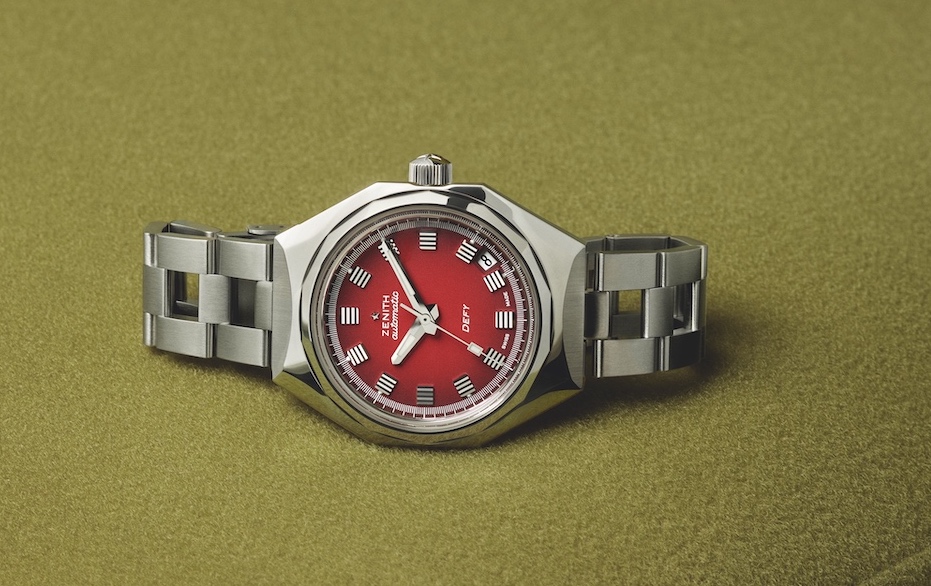To celebrate its 140th birthday, Alpina releases a limited edition rectangular watch with a restored manual-wind caliber made in 1938.

The new Heritage Carrée Mechanical 140 Years features Caliber 490, which was designed, assembled and finished in 1938 by one of the firms in the Union Horlogère, Alpina’s original entity. Such fully in-house construction was not typical of the era, when generic ébauches (movement-blanks) were more commonly used throughout the Swiss market.
Alpina has created two rectangular silver-cased models as a tribute to its anniversary. One new series features a black dial and is available in the United States and globally; the other offers a silvered dial and is available outside the United States.
Alpina explains that the slow frequency (18,000 vph) rectangular-shaped movement was built to provide extra protection against water and dust and was elegantly finished with a sun-brushed ratchet and fully beveled components.

Only a few of the movements still exist, and Alpina has done well to shape the new watch’s case to fit the shaped movement.
Alpina’s records indicate that the original case for a watch using the movement was made from steel or gold depending on the model. Alpina made the new 29.5mm x 35.7mm by 9.71mm case from mirror-polished silver and has placed anti-glare sapphire crystal on the front and back, which allows a clear view of the Caliber 490.

Both of the limited editions (of fourteen pieces each) display Alpina’s period logo, two thin central hands and a typical 1930s small seconds. A period-true rail track minute circle runs around the dial. 
On the U.S. version, Alpina places solid Arabic numerals on the black dial accompanied by beige hands and a circular small second hand display. The other version (not pictured here) sports a silvered dial, black hands and 1920s-style Arabic numerals. Alpina finishes the watch with a light brown ostrich leather strap, with vintage white stitching and pin buckle.
Price: $5,395. 
Specifications: Alpina Heritage Carrée Mechanical 140 Years
(AL-490BA3C10, a limited edition of 14 pieces)
Movement: Alpina vintage AL-490 caliber, hand-winding with 42-hour power reserve, 18,000 vph.
Case: Polished silver 2-part, 29.50mm x 35.70mm by 9.71mm, anti-reflective convex sapphire crystal, water-resistant to 30 meters, engraved and see-through screwed case back.
Dial: Black with matte finishing, beige printed Arabic numerals and beige graduation, beige hour and minute hands, small second counter at 6 o’clock with beige hand.
Strap: Light brown Ostrich leather with off-white stitching, pin buckle.
Price: $5,395, available starting in July.


































